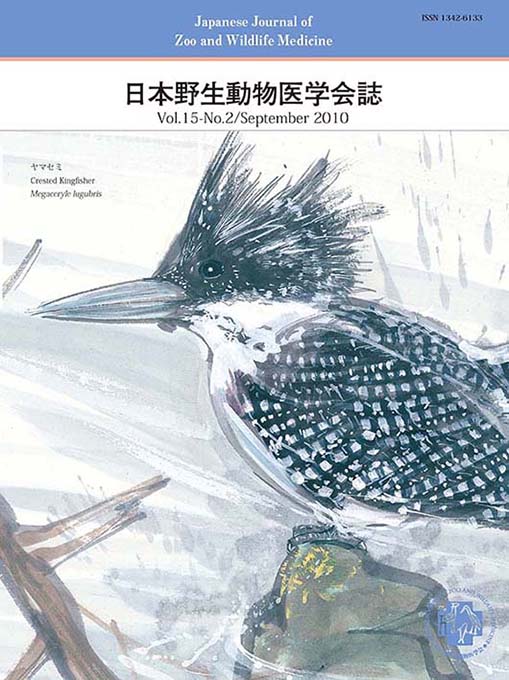Volume 15, Issue 2
Displaying 1-12 of 12 articles from this issue
- |<
- <
- 1
- >
- >|
Full paper
-
Article type: Full paper(English)
Subject area: Reproduction
2010Volume 15Issue 2 Pages 49-55
Published: 2010
Released on J-STAGE: March 01, 2011
Download PDF (1048K) -
Article type: Full paper(English)
Subject area: Nutrition
2010Volume 15Issue 2 Pages 57-64
Published: 2010
Released on J-STAGE: March 01, 2011
Download PDF (577K) -
Article type: Full paper(English)
Subject area: Reproduction
2010Volume 15Issue 2 Pages 65-72
Published: 2010
Released on J-STAGE: March 01, 2011
Download PDF (641K) -
Article type: Full paper(English)
Subject area: Animal genetics
2010Volume 15Issue 2 Pages 73-78
Published: 2010
Released on J-STAGE: March 01, 2011
Download PDF (518K) -
Article type: Full paper(Japanese)
Subject area: Parasitology
2010Volume 15Issue 2 Pages 79-86
Published: 2010
Released on J-STAGE: March 01, 2011
Download PDF (558K) -
Article type: Full paper(Japanese)
Subject area: Public health
2010Volume 15Issue 2 Pages 87-93
Published: 2010
Released on J-STAGE: March 01, 2011
Download PDF (499K)
Research note
-
Article type: Research note(Japanese)
Subject area: Ecosystem conservation
2010Volume 15Issue 2 Pages 95-100
Published: 2010
Released on J-STAGE: March 01, 2011
Download PDF (672K) -
Article type: Research note(Japanese)
Subject area: Parasitology
2010Volume 15Issue 2 Pages 101-104
Published: 2010
Released on J-STAGE: March 01, 2011
Download PDF (306K)
Case report
-
Article type: Case report(Japanese)
Subject area: Pathology
2010Volume 15Issue 2 Pages 105-109
Published: 2010
Released on J-STAGE: March 01, 2011
Download PDF (1274K) -
Article type: Case reporty(Japanese)
Subject area: Parasitology
2010Volume 15Issue 2 Pages 111-113
Published: 2010
Released on J-STAGE: March 01, 2011
Download PDF (591K) -
Article type: Case report(Japanese)
Subject area: Parasitology
2010Volume 15Issue 2 Pages 115-119
Published: 2010
Released on J-STAGE: March 01, 2011
Download PDF (2500K) -
Article type: Case report(English)
Subject area: Internal medicine
2010Volume 15Issue 2 Pages 121-126
Published: 2010
Released on J-STAGE: March 01, 2011
Download PDF (391K)
- |<
- <
- 1
- >
- >|
